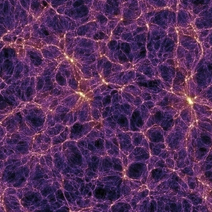Astrophysics sometimes sounds like science fiction: our Universe is filled with strange substances or objects, and theories describing its evolution or its nature can have some rather catchy names. Dwarf stars, dark matter, dark energy, Big Bang, wormholes, phantom energy… What are all these things, and where do those funky names come from?
Dwarf stars
Dwarf stars are stars with a luminosity up to 20,000 times that of the Sun, and a mass up to 20 solar masses. In other words, they are normal stars (90% of the stars are dwarfs). Our Sun itself is a dwarf star, a yellow dwarf. There are other types of dwarfs: white dwarfs, red dwarfs, brown dwarfs and black dwarfs (these are actually not emitting any form of radiation). Why calling the majority of stars “dwarf stars”? The reason is partly historical: in 1906, the Danish astronomer Ejnar Hertzsprung noticed that the reddest stars could be divided into two distinct groups. These stars are either much brighter than the Sun, or much fainter. To distinguish these groups, he called them “giant” and “dwarf” stars.
Dark matter
Dark matter is maybe one of the most famous mysteries of our Universe. According to observations made in the early 30’s, and other subsequent observations, some of the Universe’s mass is “missing” (dark matter accounts for 23% of the mass-energy density of the Universe). Although dark matter was postulated by Fritz Zwicky in 1934 to account for the “missing mass” of the Universe, the term “dark matter” has an older origin. It was first used by the Dutch astronomer Jacobus Cornelius Kapetyn in 1922, to denote invisible matter whose existence is suggested by its gravity only. The term dark matter is now commonly used by astrophysicists, and the real nature of this missing mass remains a mystery.
Dark energy
Dark energy is the name given to the unknown form of energy responsible for the acceleration of the expansion of the Universe (there is a detailed article about it here). Nobody knows what it is, and various theories try to describe its possible nature. We don’t know much about our Universe: dark energy currently accounts for 73% of its total mass-energy density. With a quick calculation, you realize that what we know of our Universe only accounts for 4%… Rather than naming it “unknown stuff with negative pressure that fills all of space and makes it expand at an accelerating rate while laughing at that poor gravity” (well, that would have been a bit long), astrophysicists chose the term “dark energy”, echoing the term “dark matter”. It was coined by Michael S. Turner, a theoretical cosmologist, in 1988.
Big Bang
It is today commonly accepted that the Big Bang is the event that led to the formation of the Universe. Originally described by the Belgian priest and astronomer Georges Lemaître, he called it the “hypothesis of the primeval atom”. According to this model, the Universe expanded from a singularity of infinite density and infinite temperature 13.75 billion years ago approximately. The term “Big Bang” was coined as a jocular and pejorative name by the English astronomer Fred Hoyle during a 1949 radio broadcast. He later denied it was meant to be pejorative, and said it was just a striking image to highlight the difference between this model and the one he favored, the “steady state” model.
Wormholes
Wormholes are another strange feature of the Universe: a wormhole is a hypothetical “shortcut” through spacetime (see here). Widely used in science fiction, a particular type of wormhole could allow someone to travel between two extremely distant parts of the Universe very quickly, or even to travel through time. You could think of it as a very special door: while a usual door allows you to go from one room to another, this one would take you to another galaxy almost instantly, for example. The American theoretical physicist John Wheeler coined the term “wormhole” in 1957, referring to a worm digging through an apple to reach the other side, instead of traveling on its surface.
Phantom Energy
As you might have guessed, phantom energy is a particular form of dark energy which, if it exists, would accelerate the expansion of the Universe so quickly that it would end in a Big Rip (take a look here). Robert Caldwell first used the name “phantom energy” in 2002, as it refers to “something which is apparent to the sight or other senses but has no corporeal existence” (these are Caldwell’s words). Looking at the title of his article might indicate that he also found inspiration in Star Wars!
For sure, astrophysics may sometimes look like science-fiction, but these catchy names are simple and easy to remember. Finally, there might also be something to what Doc Brown said:
“The way I see it, if you’re gonna build a time machine into a car, why not do it with some style?”
